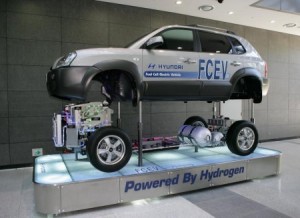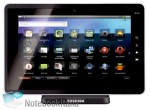 Η Greenpeace με τη νέα της έκθεση αποκαλύπτει τα ψέματα του πυρηνικού λόμπι και αποδεικνύει ότι τα πυρηνικά είναι η πιο ακριβή επιλογή για την κάλυψη των ενεργειακών μας αναγκών.
Η Greenpeace με τη νέα της έκθεση αποκαλύπτει τα ψέματα του πυρηνικού λόμπι και αποδεικνύει ότι τα πυρηνικά είναι η πιο ακριβή επιλογή για την κάλυψη των ενεργειακών μας αναγκών.
Η κρίση στη Φουκουσίμα κατέρριψε, δυστυχώς με το χειρότερο τρόπο, το μύθο ότι η πυρηνική ενέργεια είναι ασφαλής.
Η Greenpeace, όλες αυτές τις ημέρες αντιμετωπίζει με υπεύθυνο τρόπο την κρίση στον πυρηνικό σταθμό της Φουκουσίμα, ενώ παράλληλα παρέχει ανεξάρτητη και ειλικρινή πληροφόρηση.
Σήμερα με τη νέα της έρευνα, καταρρίπτει τον άλλο αγαπημένο μύθο του πυρηνικού λόμπι: αυτόν της ‘φθηνής πυρηνικής ενέργειας’.
Αξιοποιώντας ιστορικά δεδομένα δεκαετιών από τη χρήση πυρηνικής ενέργειας παγκοσμίως, η έκθεση παρουσιάζει αναλυτικά στοιχεία για το συνολικό κόστος των πυρηνικών σταθμών, το οποίο αποδεικνύεται πολλαπλάσιο αυτού που ισχυρίζεται η πυρηνική βιομηχανία.
Επιπλέον, συγκρίνει το κόστος της παραγόμενης ενέργειας μεταξύ πυρηνικών και ανανεώσιμων πηγών ενέργειας (ΑΠΕ),καταλήγοντας στο συμπέρασμα ότι οι ΑΠΕ αποτελούν την πιο σίγουρη, ασφαλή και οικονομικά αποδοτική επένδυση.
Το πυρηνικό λόμπι ισχυρίζεται συνεχώς ότι η ενέργεια από τα πυρηνικά είναι ‘φθηνή’, αναφερόμενη κυρίως σε εκτιμήσεις για το κόστος κτήσης και εγκατάστασης του βασικού εξοπλισμού ενός πυρηνικού σταθμού.
Αυτό ωστόσο αποτελεί μέρος μόνο του πραγματικού οικονομικού κόστους της πυρηνικής ενέργειας, αφού πολύ βολικά συνήθως δεν αναφέρονται μία σειρά από άρρηκτα συνδεδεμένα κόστη, όπως το κόστος δανεισμού, κατασκευή υποδομών και δικτύων, τη διαχείριση των ραδιενεργών αποβλήτων κ.α.
Στη νέα της έκθεση με τίτλο ‘Ο Μύθος της Φθηνής Πυρηνικής Ενέργειας’, η Greenpeace αξιοποιεί ιστορικά δεδομένα δεκαετιών από τη χρήση πυρηνικής ενέργειας παγκοσμίως, καταρρίπτοντας οριστικά το μύθο της φθηνής πυρηνικής ενέργειας.
Επιπλέον, η έκθεση συγκρίνει το κόστος της παραγόμενης ενέργειας μεταξύ πυρηνικών και ανανεώσιμων πηγών ενέργειας (ΑΠΕ), καταλήγοντας στο συμπέρασμα ότι οι ΑΠΕ αποτελούν την πιο σίγουρη, ασφαλή και οικονομικά αποδοτική επένδυση.
Η Greenpeace καλεί τις ευρωπαϊκές κυβερνήσεις να:
* αποσύρουν άμεσα τους πιο γερασμένους και επικίνδυνους πυρηνικούς σταθμούς, στο πλαίσιο μίας οριστικής κατάργησης της πυρηνικής ενέργειας, στις επόμενες δύο δεκαετίες.
* αναβαθμίσουν το στόχο μείωσης των εκπομπών ως το 2020 σε 30%, προκειμένου να τεθούν έγκαιρα οι βάσεις για την υιοθέτηση στόχου 100% ΑΠΕ στην ηλεκτροπαραγωγή ως τα μέσα του αιώνα.
Διαβάστε εδώ την έκθεση της Greenpeace
 Eco Architecture
Eco Architecture Άγνωστο κανάλι
Άγνωστο κανάλι Άγνωστο κανάλι
Άγνωστο κανάλι
 Η
Η 






